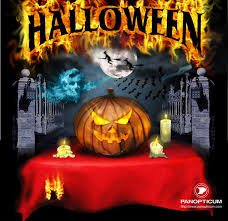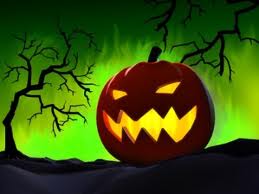Halloween Superstitions Soon, we will read about some traditional Halloween superstitions. Before we do, however, let's see if we can think of a few common superstitions. Can you think of common superstitions in the US? In Korea? Try to name three of each! 1. 2. 3. Halloween Superstitions Halloween has always been a holiday filled with mystery, magic
and superstition. It began as a Celtic end-of-summer festival during which
people felt especially close to deceased family and friends. For these friendly
spirits, they set places at the dinner table, left treats on doorsteps and
along the side of the road. They also lit candles to help loved ones find their
way back to the spirit world. Today's Halloween ghosts are often shown as more
fearsome and malevolent, and our customs and superstitions are scarier, too. We
avoid crossing paths with black cats, afraid that they might bring us bad luck.
This idea has its roots in the Middle Ages, when many people believed that
witches avoided detection by turning themselves into cats. We try not to walk
under ladders for the same reason. This superstition may have come from the
ancient Egyptians, who believed that triangles were sacred; it also may have
something to do with the fact that walking under a leaning ladder tends to be
fairly unsafe. And around Halloween, especially, we try to avoid breaking
mirrors, stepping on cracks in the road or spilling salt. But what about the Halloween
traditions and beliefs that today's trick-or-treaters have forgotten all about?
Many of these obsolete rituals focused on the future instead of the past and
the living instead of the dead. In particular, many had to do with helping
young women identify their future husbands and reassuring them that they would
someday—with luck, by next Halloween—be married. In 18th-century Ireland, a
matchmaking cook might bury a ring in her mashed potatoes on Halloween night,
hoping to bring true love to the diner who found it. In Scotland,
fortune-tellers recommended that an eligible young woman name a hazelnut for
each of her suitors and then toss the nuts into the fireplace. The nut that
burned to ashes rather than popping or exploding, the story went, represented
the girl's future husband. (In some versions of this legend, confusingly, the
opposite was true: The nut that burned away symbolized a love that would not
last.) Another tale had it that if a young woman ate a sugary concoction made
out of walnuts, hazelnuts and nutmeg before bed on Halloween night she would
dream about her future husband. Young women tossed apple-peels over their
shoulders, hoping that the peels would fall on the floor in the shape of their
future husbands' initials; tried to learn about their futures by peering at egg
yolks floating in a bowl of water; and stood in front of mirrors in darkened
rooms, holding candles and looking over their shoulders for their husbands'
faces. Other rituals were more competitive. At some Halloween parties, the
first guest to find a burr on a chestnut-hunt would be the first to marry; at
others, the first successful apple-bobber would be the first down the aisle. Of course, whether we're asking
for romantic advice or trying to avoid seven years of bad luck, each one of
these Halloween superstitions relies on the good will of the very same
"spirits" whose presence the early Celts felt so keenly.




